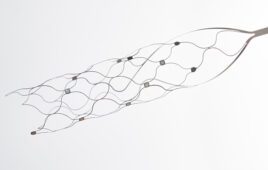
[Photo by Helloquence on Unsplash]
Kit Gianforte, Product Creation Studio
Developing a new product can be an exciting and overwhelming time. You have observed an unmet need in the world and have a great idea for a new product that will address it.
Now, you want to share your vision with your team and partners, so that you can quickly take advantage of the new opportunity. But you might have forgotten something.
Marketing requirements are overlooked or seen as a low priority during these early activities. However, they are actually an absolutely critical part of the process and create a solid foundation for product development.
This article explains what marketing requirements are and how they differ from product requirements. It will then demonstrate how solid marketing requirements facilitate better decisions and ultimately produce better products.
Creating a clear picture of the market opportunity
Marketing requirements create a clear picture of the market opportunity by expressing the unmet customer need.
Maybe there is currently no product that offers a particular service, or maybe the product that is currently available suffers from a failure or bug.
In either case, marketing requirements state an intent to meet that need. They describe how the solution will fit into the market, how it will be seen by the user, and how it will fit into the company’s product portfolio.
For example, imagine you are developing a new cell phone. One marketing requirement would be:
The device shall be easily carried in a woman’s pocket.
There is an unmet need in that area; current phones are too large to fit in women’s pockets. With this new phone, your portfolio will be extended into the female market. Users will be able to carry the phone with them at all times and will begin to see the phone as a part of themselves.
Product requirements are then generated based on marketing requirements to describe, in detail, a product that meets the need. They might describe the phone’s weight, size, and ability to withstand being accidentally sat on.
Here are some examples of how the product requirements serve the marketing requirement of “being easily carried into a woman’s pocket”:
- The device shall weigh no more than 0.5 lbs.
- The device shall have a footprint no larger than 3 x 6 inches.
- The device shall suffer no degradation of performance when a force of 100 lbs is applied to a 2-inch square area on its front face.
These requirements inform the work of the engineering teams, who then choose to use light and strong materials and choose a touch screen that fits the desired footprint.
Inviting innovation
In the early stages of development, it can be tempting to jump directly into product requirements. However, taking the time to develop clear and deliberate marketing requirements first actually results in more space for innovation.
Consider a home-worn heart-rate monitor:
It may be tempting to immediately lock down that a product requirement is for the monitor to be waterproof – surely that would be important to the user. However, the better approach is to specify that the marketing requirements that the device should be usable in the shower and while swimming.
This type of thinking is often a true measure of a product’s success. Keep in mind, creative designers may be able to develop new solutions to satisfy them.
For example, perhaps the monitor could be split into two pieces: a simple waterproof bracelet that can be worn in the shower or pool, and a separate non-waterproof module that displays information. Users might prefer the lightweight bracelet design, even though it doesn’t satisfy the initial product requirement for waterproofness.
Communicating these high-level marketing requirements before listing the product requirements, leaves space for innovative designers to do their best work.
Informing decisions
As you move forward in the product development process, marketing requirements continue to be valuable for making decisions and setting priorities. That’s because they clearly state which features are truly necessary to capture the market, and which are simply nice to have bells and whistles.
When tough decisions must be made between scope and budget, solid marketing requirements are the key to consistent and wise decisions for the business.
An invaluable resource
When inspiration strikes for the next revolutionary product, generating marketing requirements may seem like an unnecessary speed bump.
However, marketing requirements prove invaluable throughout development, because they communicate your vision clearly to partners, allow room for innovation, and ensure a complete solution for the customer. Especially when paired with early User Studies, marketing requirements truly set a product up for success.
Kit Gianforte recently joined the Product Creation Studio team as a quality engineer. Previously, she worked in R&D at various medical device manufacturers including Medtronic and Philips. She holds a bachelor’s degree in mechanical engineering from Caltech and is currently pursuing a Master of Data Science degree from UC Berkeley, with a focus on statistics and data analysis.
The opinions expressed in this blog post are the author’s only and do not necessarily reflect those of MedicalDesignandOutsourcing.com or its employees.





Some great insight into how best to capture User Needs!
Thank you